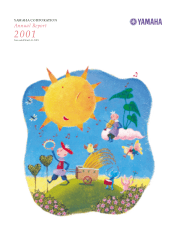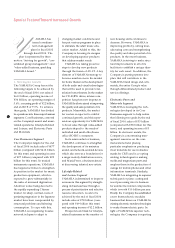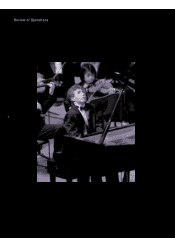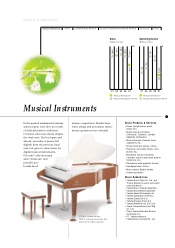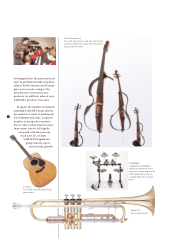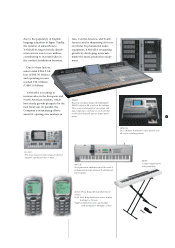Yamaha 2001 Annual Report Download - page 4
Download and view the complete annual report
Please find page 4 of the 2001 Yamaha annual report below. You can navigate through the pages in the report by either clicking on the pages listed below, or by using the keyword search tool below to find specific information within the annual report.
Please describe the
YAMAHA Group’s business
performance for fiscal
2001, ended March 31,
2001.
It is well known that the
YAMAHA Group posted
net losses for both fiscal
1999 and fiscal 2000. As a result,
throughout fiscal 2001 the chief
managerial task has been to return
the Company to profitability.
Having withdrawn from the storage
heads business, which was making
large losses, we attacked the problem
in two ways. First, we continued to
prioritize our activities to strengthen
the profitability of our semiconductor
operations. Second, we accelerated
our commitment to raising the
profitability of our core musical
instruments and AV•IT operations.
Ultimately, YAMAHA delivered on
its plans to boost profits through its
mobile phone and telecommunica-
tions-related parts operations.
However, these were not the only
difficulties facing us. Although
Lifestyle-Related Products finished
in the black for the first time in
three years thanks to our differen-
tiated product selection and a
reduction in manufacturing costs,
these positive results were offset by
persistent economic stagnation, one
manifestation of which was a slump
in the number of new housing starts.
Similarly, countervailing influ-
ences, such as flat consumption and
a marked reduction in returns per
customer, contributed to a year-on-
year fall in revenues and major loss-
es. In this area, our fundamental
task is to return to profitability
through greater efficiency while
maintaining a solid safety manage-
ment program.
A
Q
How do you view the
YAMAHA Group’s con-
solidated growth?
We have drawn up our
medium-term management
plan for fiscal 2002 through
fiscal 2004. Our goals to be achieved
by the end of fiscal 2004 include
sales of ¥610 billion, recurring profit
of ¥22 billion, an ROE of 9.5%,
and free cash flow amounting to ¥17
billion. In addition to these concrete
targets, we have added three catch-
phrases: “striving for growth”;
“consolidated Group management”;
and “value-added business, sparkling
YAMAHA brand.” Aiming for
growth, we have divided the Group’s
A
Qoperations into three main business
segments: Core Businesses, Lifestyle-
Related and Leisure, and Electronic
Parts and Materials. For each seg-
ment, we have mapped out specific
strategies aimed at improving growth
and competitiveness. First, for our core
businesses, sound- and music-related
operations, we will strengthen our
existing musical instruments and
AV•IT operations. In addition, we
are investing in a media business
that will benefit from hardware,
software, and content synergies.
Through these plans, YAMAHA is
working toward integrated growth
for its core businesses. Second, our
strategic approach for the lifestyle-
related and leisure business segment
2
Interview with the President

